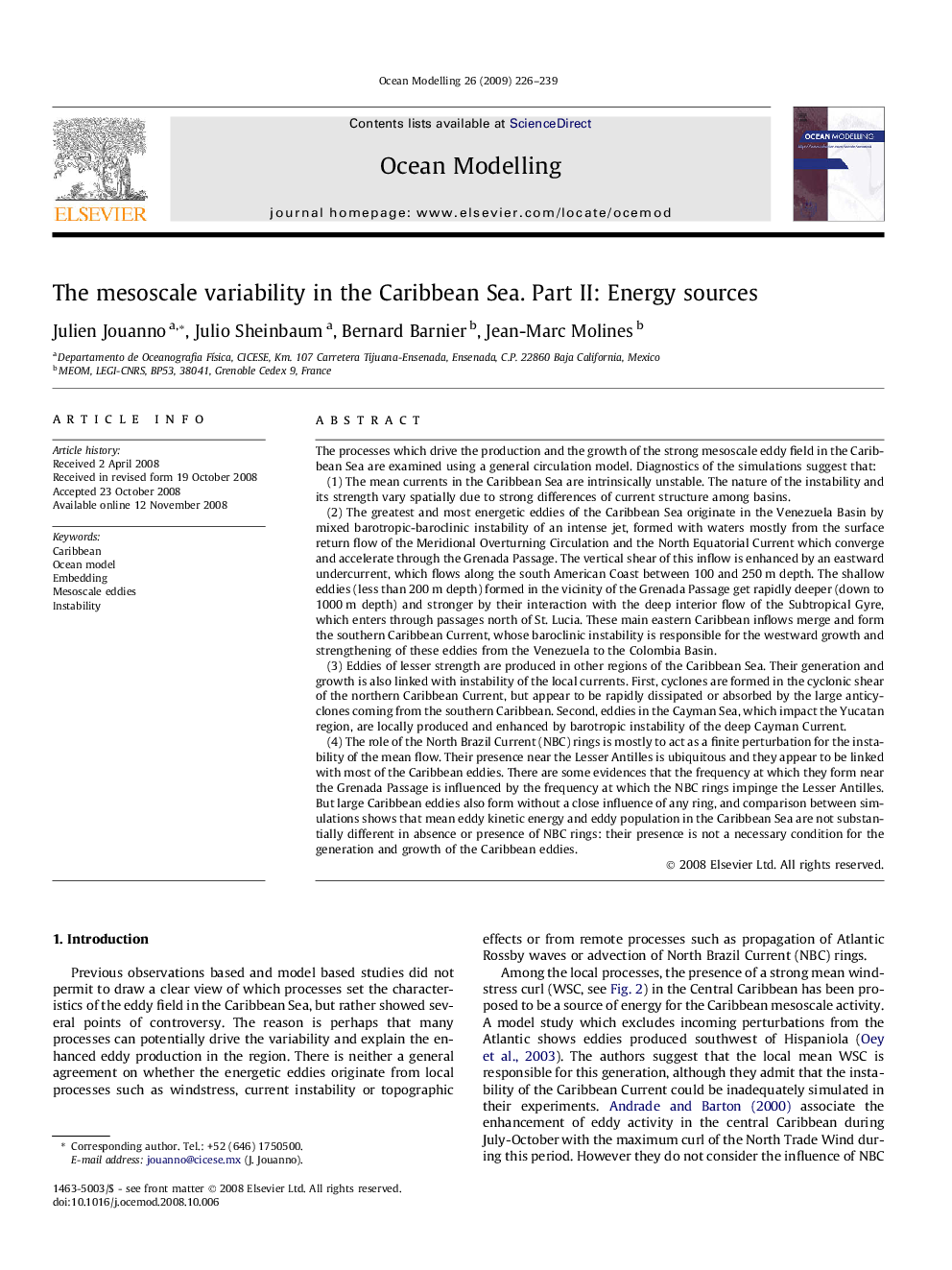| کد مقاله | کد نشریه | سال انتشار | مقاله انگلیسی | نسخه تمام متن |
|---|---|---|---|---|
| 4552608 | 1627824 | 2009 | 14 صفحه PDF | دانلود رایگان |

The processes which drive the production and the growth of the strong mesoscale eddy field in the Caribbean Sea are examined using a general circulation model. Diagnostics of the simulations suggest that:(1) The mean currents in the Caribbean Sea are intrinsically unstable. The nature of the instability and its strength vary spatially due to strong differences of current structure among basins.(2) The greatest and most energetic eddies of the Caribbean Sea originate in the Venezuela Basin by mixed barotropic-baroclinic instability of an intense jet, formed with waters mostly from the surface return flow of the Meridional Overturning Circulation and the North Equatorial Current which converge and accelerate through the Grenada Passage. The vertical shear of this inflow is enhanced by an eastward undercurrent, which flows along the south American Coast between 100 and 250 m depth. The shallow eddies (less than 200 m depth) formed in the vicinity of the Grenada Passage get rapidly deeper (down to 1000 m depth) and stronger by their interaction with the deep interior flow of the Subtropical Gyre, which enters through passages north of St. Lucia. These main eastern Caribbean inflows merge and form the southern Caribbean Current, whose baroclinic instability is responsible for the westward growth and strengthening of these eddies from the Venezuela to the Colombia Basin.(3) Eddies of lesser strength are produced in other regions of the Caribbean Sea. Their generation and growth is also linked with instability of the local currents. First, cyclones are formed in the cyclonic shear of the northern Caribbean Current, but appear to be rapidly dissipated or absorbed by the large anticyclones coming from the southern Caribbean. Second, eddies in the Cayman Sea, which impact the Yucatan region, are locally produced and enhanced by barotropic instability of the deep Cayman Current.(4) The role of the North Brazil Current (NBC) rings is mostly to act as a finite perturbation for the instability of the mean flow. Their presence near the Lesser Antilles is ubiquitous and they appear to be linked with most of the Caribbean eddies. There are some evidences that the frequency at which they form near the Grenada Passage is influenced by the frequency at which the NBC rings impinge the Lesser Antilles. But large Caribbean eddies also form without a close influence of any ring, and comparison between simulations shows that mean eddy kinetic energy and eddy population in the Caribbean Sea are not substantially different in absence or presence of NBC rings: their presence is not a necessary condition for the generation and growth of the Caribbean eddies.
Journal: Ocean Modelling - Volume 26, Issues 3–4, 2009, Pages 226–239